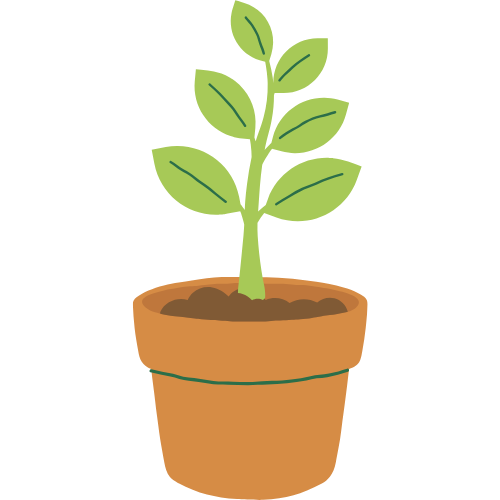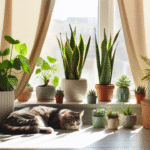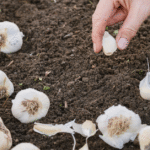It is a special feeling to dig up the potatoes you get to grow at home. One of the myriad of cuisines and a most unexpectedly versatile crop, potatoes are very satisfying to the gardener of any ability. Being properly informed and properly prepared, a small bit of your garden would in itself be a great contribution as far as supplying such nutritious vegetable is concerned. It is a step by step guide and it is supposed to make your endeavor of growing potatoes successful and enjoyable.
Time and Action: The Right Time to Plant
Potatoes also do not like very warm conditions, in fact, they grow better in cool conditions. You should plant the potatoes so that the best time to do so is during spring i.e. 2 to 4 weeks before the anticipated last frost. However, the temperature of the soil is the most important. It is important to wait until the soil warms up to at least 45∘F (7∘C). Planting them in extremely wet and cold soils can end up rooting your potatoes before it can even have a possibility of sprouting.
Where the Best Potato Patch is
In addition, before you plant your potatoes in ground, you are expected to choose where you want your potatoes to thrive.
- Sunlight: Potatoes are sun-loving crops and thus, require full sun, at least 6 hours of uninterrupted sunlight everyday. When the plant enables the foliage growth with the aid of the sun, it will then translate into the tubers having a more nutrition-rich growth underneath.
- Soil: Dark crumbly organic-rich aerated soil makes good potato soil. Sandy loam is the best because it will allow the tubers to grow freely. Heavy clay soils can be enlivened so that they will drain easily and possess ideal structures with inclusion of organic matters such as compost or well-rottened manure. In order to avoid being caught by disease, be sure not to plant in wet soil.
- Soil PH: Potatoes need slightly acidic (5.8-6.5) soil to grow the best.
Planting Your Potatoes
- Selecting Seed Potatoes: Before starting your crop, purchase certified disease-free potato seed potatoes (certified that they are free of diseases that could be transmitted to your crop), at a good nursery or garden center. Avoid purchasing potatoes that are sold in the supermarkets which may have been subjected to sprout inhibitors and harbor diseases.
- Chitting (Pre-Sprouting): Ahead of time, nearly a month before, you can prepare your potatoes by performing the process of chitting them (meaning you give them a head start). The seed potatoes must be spread in one layer, in a light, cool (up to frost) and up to frost free area (approximately 10∘C or 50∘F). The most suitable container to preserve the potatoes in a safe way would be an egg carton because it keeps the potatoes standing upright. in this manner it promotes the growth of not very long, strong, green sprouts out of the so called eyes of the potato.
- Cutting Seed Potatoes: In case the seed potatoes measure up to golf ball or even larger, then dividing it into segments will help harvest extra plants. The pieces are to be about 1.5 to 2 inches square and need to have at least one or two eyes or sprouts. The slices after quick slicing can be left at an aerated place not more than two days. This allows areas that have been cut to seal themselves and create a layer of protection that prevents the areas when they are replanted into the ground.
- Trench Method: Another very common, but old fashioned method, is to dig a hole in the ground with a depth of 6-8 inches. Place the pieces of seed potatoes in the cut-side down position and the eyes face up, in the trench about 10-12 inches apart. Then place 3-4 inches of soil over them.
- The Six-Row Technique: Plant as many rows as you have time so that there is room between each row so that it is possible to hill the potatoes later (2-3 foot gap between each row).
Taking care of the Plants
- Watering: You must always make sure that your tuber plants are well watered particularly during the flowering and tuber development stages. The thumb rule here is to water the plants once a week and 1-2 inches of water is sufficient. The water may be the rainwater or irrigation. In most cases, the infrequent and deep watering technique is the most desirable as compared to the shallow, frequent technique of watering.
- Hilling: You must do the hilling exercise in case you desire to achieve success in the production of potatoes. When the potato plants are around 6-8 inches tall, move some soil in the center of the rows and move it to the base of the plants in a gradual way as this will cover the part of the plant which is the lower leaves. Remember to do it again after about once in every 2-3 weeks. The various roles of Hilling are as follows:
- Conceals the tubers against sunshine which would turn tubers green, thereby giving them the flavor of the toxin solanine.
- Gives the tubers more space in which to grow and simplifies the process of getting rid of weeds.
- Fertilizing: Instead of managing the soil through various methods, it is more appropriate to do so through organic fertilizing. A lot of nutrients have to be given to potatoes. Thus, to reduce the likelihood of leaching and provide potato plants with the sufficient amount of nutrients, you will have to amend the soil adding in it either organic manure or fully-decomposed compost. Simultaneous to the body plant, throw into the soil a nitrogen…
- Weed control: weed out the potato plot in every possible way in the first stage of development as the plants are less resistant to insufficient nutrients and water in that time as they are competing with the weeds.
The Cherry on the Cake: Harvesting the Fruits of your Potatoes
You wished in vain to see this time! When to harvest your tubers will all depend on the variety of potatoes you plant and the reasons as to why they should be used.
- New Potatoes: You can dig up any little, tender and good-tasting potatoes that happen to be “new” any time after about 2-3 weeks after the plants had ceased flowering, and this is done very delicately at the bottom of the plant.
- Old Potatoes: Supposing you want to use your grown potatoes as stores, you only have to wait till the leaves upon your plants are yellowed and shriveled.
- Pick a dry day and take plenty of care to dig out the potatoes with maybe a garden fork or a spade taking care not to cut the tubers.
Legacy of your Spuds: Eating the Fruits of Your Labor
Proper storage is the best way to ensure that your homegrown potatoes do not manage to rot after just some few days. This is a way of doing it.
- Wash the Potatoes: They can be washed after being picked, but not cleaned, so that the tubers dry out a day or two before washing again. In cases where the weather is dry, the potatoes can be placed in the sun, or in humid seasons utilize the oven as a store, as a place to store the potatoes.
- Long-term Storage: When the potatoes have recovered, put them in a dark, cold and well-ventilated place that is kept between 35−40∘F (2−4∘C.). They should be stored best in a basement or a root cellar. Do not keep them close to the refrigerator because there will be a starch to sugar conversion caused by the cool air and this will translate to a bad taste and texture.Also avoid storing your potatoes in the company of onions since the gases released will produce a stinky smell and make them spoil with ease.
Through these steps you will shortly be in the position to enjoy the pleasures of home-grown and home-grown-cooked potatoes which are not only simple, but highly satisfactory. Happy planting!



